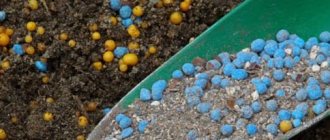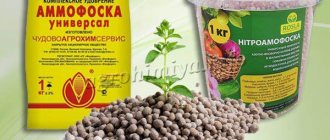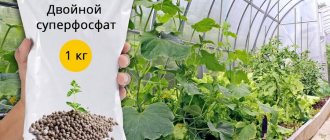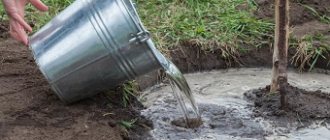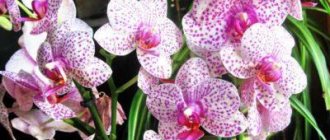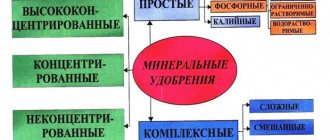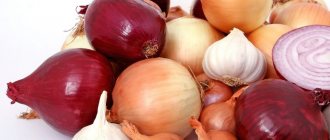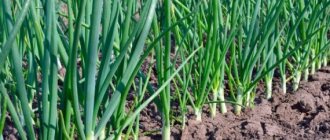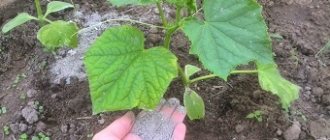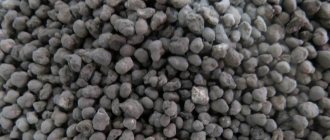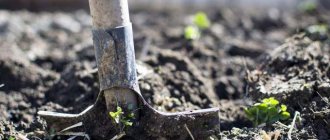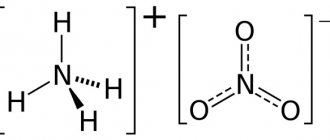What are organic fertilizers
Organic fertilizers are fertilizers that contain plant nutrients mainly in the form of organic compounds.
Organic fertilizers include:
- manure;
- composts;
- straw;
- peat;
- ash;
- bone flour;
- bird droppings;
- silt;
- green manure;
- industrial and household waste;
- complex organic fertilizers.
Below we will talk in more detail about each type of organic fertilizer and how to use them correctly.
Liquid organic fertilizers, their types and characteristics
In addition to solid nutritional complexes, you can feed crops with liquid organic matter. You can prepare a solution from almost any type described above. But there are several remedies that are worth mentioning separately.
Slurry
Semi-finished liquid fertilizer obtained from manure. Before use, the product is diluted with clean water in a ratio of 1:5.
Nettle infusion
An effective option for foliar spraying. It’s easy to prepare: just fill ⅔ of the bucket with green shoots and add water. The concentrate is infused for a week, after which it can be used, after diluting it with liquid.
Manure
There are several types of manure:
- bovine;
- horse;
- pork.
Cow manure is the most popular and is used to fertilize most garden plants. Manure contains:
- nitrogen;
- calcium;
- phosphorus;
- potassium.
Despite the widespread use of cow manure, it is one of the least nutritious types of organic matter. Because of this, it must be applied to infertile soil in large quantities or in combination with other organic fertilizers.
Horse manure, compared to cow manure, is more nutritious and valuable, as it contains many useful elements used by plants during growth and development. The content of substances in the composition is similar to that of cow manure, but in horse manure they are an order of magnitude higher. Horse manure is used to feed pumpkins, zucchini, potatoes, and cabbage. The product is also embedded in greenhouses to heat beds.
Using pig manure to fertilize your soil is risky because it is the most caustic type of fresh fertilizer. The nitrogen content in pig manure exceeds the amount of this element in horse fertilizer. For this reason, the use of pig feces can destroy vegetation in the garden. Fresh pig manure can be used as a source of nitrogen, but it must be diluted with plenty of water so as not to harm plant roots. Also, this type of organic fertilizer can be used to oxidize the soil.
As a rule, only experienced gardeners and gardeners use manure as an organic fertilizer. Since fresh feces contain a large amount of nitrogen, weed seeds, and various parasites, using such a product without composting or diluting is quite dangerous. We do not advise you to use fresh animal waste to grow any products.
How to properly prepare and apply organic fertilizers with your own hands?
Chicken droppings
More often, droppings are used in the form of liquid organic fertilizer. To prepare the fertilizer, 3 main methods have been developed.
Production of organic fertilizers from chicken manure:
- fermentation. Previously, the method was used only by large poultry owners, but now the method is available to everyone, since substances are commercially available to accelerate the fermentation process. The idea is quite simple: a tray is installed under the cage on which excrement will accumulate. Sometimes you need to add sawdust to the feces, only they are moistened in the preparation. At the cleaning stage, everything is mixed and placed in one pile. When reaching 1–1.5 m in height, add a UV or EM accelerator;
- infusion. It has a high nitrogen concentration and is easy to manufacture. To prepare, you need to take rotted manure and add water. The mixture is left for 2–3 days with periodic stirring. A light-colored liquid is expected. If the shade is darker, the solution is additionally mixed with water before use;
- soaking. This method of producing organic fertilizer helps eliminate excess acidity. The excrement is filled with liquid and left for 2 days. After settling, the water is drained and fresh droppings are added. This procedure is carried out 2-3 times. The substance is used by instillation into the grooves between rows or plants.
Cow manure is one of the most famous and most used organic fertilizers.
Cow dung
The fertilizer is effective and can be used on most plants, but to achieve a positive result you need to follow some rules. Fresh mullein can only be used to create warm beds. Rotted manure is often used.
Producing organic fertilizer from cow manure is quite simple:
- The bottom is lined with straw.
- Excrement is placed on top.
- As the heap grows, layering is carried out, and organic matter, peat or soil is placed between the layers.
- After reaching a height of about 1.5 m, the pile is covered with oilcloth.
- For complete rotting, you need to periodically water the pile; you can remove the film when it rains.
- The decomposition period ranges from 6 to 12 months.
Now you can simply scatter mullein around the garden at a ratio of 4–5 kg per 1 m2. An alternative use is a solution, it is prepared based on a proportion of 1 to 10. To infuse, you need to wait 1 day, then add ash. The mixture is used for foliar feeding. After the procedure, you need to pour the area generously.
Horse dung
Most often used as humus. When properly stored, horse manure will contain many useful substances, the amount is 2-3 times greater than in its raw form. Fertilizer can be applied in quantities of up to 5 buckets per tree and up to 3 buckets per bush. You can simply cover the ground 10 cm thick.
Horse manure is a valuable highly concentrated organic fertilizer
An infusion of manure and nettle has proven to be very effective. To prepare you need:
- Fill the container with nettles with water.
- Infuse the mixture for 3 days.
- Horse manure is added to the liquid, proportion 1 to 10.
- Leave the mixture for another 2 days.
After preparation, you can spray or water the plants.
Humus
The most popular type of natural fertilizer is humus. It is an organic fertilizer into which fresh manure or plant residues are converted after several years of rotting. This feeding contains a minimum amount of moisture and a maximum amount of useful elements per unit of mass.
In other words, humus is any type of manure or plant residues that have been in a state of maturation or composting for 2-3 years, after which they turned into humus. This product contains no pathogens, parasites, or weed seeds.
Humus helps to increase soil fertility and improve its structure. It retains moisture in sandy soils, making heavy clay soils free-flowing.
Benefits of humus:
- no toxicity;
- can be used on any type of soil;
- improving soil consistency;
- increasing soil fertility and productivity of fed crops;
- safety for plants and people;
- Possibility of use as biofuel.
Flaws:
- the need to apply a large amount of fertilizing per unit area;
- high cost of natural fertilizer;
- the value and composition of the fertilizer depends on the diet of the animals from which the humus is obtained;
- long wait for humus when purchasing fresh manure;
- the need for a large area for storing fertilizer.
To summarize, it can be noted: using humus is economically beneficial only if you have your own livestock and use fertilizer to fertilize your own plot. When purchasing humus, it is more profitable to use it to add the most valuable plants and trees to the soil.
Useful properties and applications
In nature, everything is natural and interchangeable.
Thus, animal feces or dead plants, when decomposed or during the process of decay, form useful substances. They are safe. With their help, the top layer of soil is enriched with useful microelements.
Thanks to the use of organic matter, excellent yield results can be obtained. Nature itself made sure that vegetables and fruits were grown in an environmentally friendly way. All a person can do here is to make an effort, albeit a considerable one.
Why are organic fertilizers considered the most valuable and productive, what are the positive or negative aspects of their use and other important points?
First, let's get acquainted with the most common types of organics :
- manure – food waste from animals;
- peat substrate;
- heaps in which waste, leaves, and plants from the garden are stored in layers. As a result of overheating, compost is obtained;
- plant organic matter (chopped hay, straw, plants);
- household food waste;
- agrochemicals and other factory-made complex fertilizers.
Positive properties of organic fertilizers:
- with the help of organic matter, soil fertility is improved;
- the structure of the soil layer improves;
- the earth is saturated with necessary microelements, which also contribute to the enrichment of the soil;
- the water and oxygen regime is restored;
- availability of natural material.
Negative properties of organics:
- difficulty balancing nutrients;
- there is a possibility of overdose;
- organic matter contains many weed seeds;
- plants can become infected with diseases.
Bird droppings
Not all experienced gardeners and gardeners risk using bird droppings to feed crops. Let's look at the characteristics of this fertilizer and find out what concerns are associated with its use.
Bird droppings contain nitrogen (16 g), phosphorus (15 g), potassium (9 g) and calcium (24 g). Poultry manure is several times higher in nitrogen content than pig manure. You might think that since pig manure is not recommended to be applied to the soil, then bird droppings are even more so. But it's not that simple. By the way, it is strictly forbidden to use pure chicken manure.
To avoid scorching of plant roots and to properly dispose of bird droppings, fresh waste can be composted or fertilized. It is also permissible to use chicken coop litter to fertilize fruit crops. But this can only be done in cases where there is little feces in the litter.
Advantages:
- acceleration of fruit ripening;
- increasing productivity;
- improving plant immunity;
- no toxicity;
- versatility;
- effective for 3 years after application to the soil.
Minuses:
- improper use leads to the death of vegetation;
- the need for aging or dilution in water;
- an overdose of droppings leads to unsuitability of the soil throughout the year.
It is best to apply bird droppings after composting. The nitrogen concentration decreases 2–3 months after maturation, as a result of which the fertilizer becomes safe for use. It is economically profitable to use bird droppings from personal farms, since purchased ones cannot justify the costs.
Storage methods and conditions
One of the disadvantages of organics is their short shelf life. With proper care and temperature control, the service life can be increased. For each class of natural fertilizer there are certain conditions:
- wood ash is poured into a plastic bag without any damage. They tie well. Store in a cool, dry place. Ventilate periodically, but do not allow moisture;
- the droppings are dried into a dry mixture. To preserve qualities, mix with superphosphate or dry peat;
- The manure heap must be laid in layers and covered with thick polyethylene. You can use roofing felt. If it dries out, water it with fresh manure liquid. Use separated water.
Rabbit droppings
Rabbit droppings are one of the best types of fresh organic fertilizer and their consistency allows for easy transportation. Moreover, the absence of parasites and weed seeds makes this fertilizer safe for vegetation and humans.
Rabbit droppings can be made into powder, as the product contains a minimal amount of moisture. The resulting fertilizer is mixed with soil at the rate of ⅓ tbsp. per 1 kg of soil and used as a substrate for indoor plants. Rabbit droppings are also suitable for feeding plants that need large amounts of magnesium, since the fertilizers described above do not contain this element.
Fresh fertilizer cannot be applied to the soil. Otherwise, the product will scorch the plant root system.
Fertilizer is not used in its pure form; it can be applied to compost or prepared as an aqueous infusion. This biological fertilizer is valuable for agriculture.
Pros:
- ease of transportation;
- rich chemical composition;
- high biological value;
- versatility;
- absence of parasites and weed seeds.
Flaws:
- excess feeding leads to the death of vegetation;
- the need for pre-composting;
- high cost;
- drying out leads to the loss of half of the nutrients;
- fresh use is almost impossible.
Application of organics
Organic matter is often used to enrich the soil composition. It is worth remembering that excess nutrients are harmful. It is required to follow the technology of applying organic fertilizers. If a plant receives organic matter in large quantities, it dries out or becomes covered with weeping spots.
Organics have their own classification. You can prepare it yourself or buy it in a store. The application of liquid organic fertilizers is advisable during the growing season. Such fertilizing increases the quality of the crop. Natural products are easy to use and affordable . Complex formulations that combine several products are popular. The composition of the product is important; each contains valuable microelements:
- potassium;
- calcium;
- silicon;
- nitrogen;
- phosphorus.
Silicon and sulfuric acid are added to complex compositions .
Compost
In terms of popularity, compost is the second type of fertilizer after humus. And also the first in cost and ease of preparation.
Compost is organic residues that have decomposed over a certain period of time under the influence of the external environment or through some means. To make compost, you can use any vegetation residues, manure, peat, leaves, plant and animal human waste that are not suitable for feed.
Well-rotted compost is not inferior in properties to humus. For this reason, it is added to the soil in the same dose as humus. Compost can be used to fertilize any plants, fruit and ornamental crops.
Advantages:
- versatility;
- low cost of resources and time;
- low cost;
- absence of weeds and harmful microorganisms;
- Animal and plant residues are suitable as raw materials.
Minuses:
- the value of feeding depends on the raw materials;
- during the decomposition process an unpleasant odor occurs;
- the need for a large space for storing compost;
- large volume of fertilizers per unit area;
- purchased compost has extremely low benefits for plants.
Unripe compost promotes active nutrition of plants for several months. For this reason, it is more effective to apply it when digging up fruit trees and shrubs, as well as vegetable beds. We do not recommend buying compost, as you cannot be sure what raw materials were used for it.
Organic complexes
Complex organic fertilizers are compositionally balanced mixtures consisting of raw materials of plant and animal origin. They can completely replace mineral fertilizers, as they contain all the nutrients and microelements necessary for plants.
To fully understand complex organic fertilizers - what substances they contain, what they contain and how they are made, it is necessary to understand the available types and give a brief description.
Compost
You can prepare it yourself using the principle of recycling waste using microorganisms. The basis is taken from poultry, horse or cattle manure. Additional components:
- kitchen waste - bread, peelings, egg shells;
- paper, cardboard;
- garden waste - leaves, branches, tops, weeds, fallen fruits;
- bone flour;
- milk residues;
- yeast;
- peat, silt
Everything that is nearby or on the farm goes into compost. Preparation takes time, but the effort is worth it: if you mix compost with soil, soil aeration and its nutritional properties will improve.
Compost must be prepared as follows: all components are placed in layers in a pit or container designated for this purpose. You can add process accelerators - special liquid substances that contain effective bacteria that process organic matter. For example - Baikal EM1 .
Compost is a very valuable product that improves soil aeration.
The processing reaction occurs with the release of heat. In industrial production, the temperature of the compost heap reaches 85 degrees . This destroys all harmful bacteria, larvae and eggs of parasites, fungi. When introduced into the soil, microorganisms continue their work and act on harmful bacteria, viruses and fungi. The soil becomes cleaner and healthier, enriched with oxygen, which is beneficial for plants.
Vermicompost
A waste-based product processed by earthworms. In the process, the worms eat the waste, passing it through their intestines. As a result, the fertilizer takes the form of small granules; the substances are in an easily accessible form for absorption by plants.
Vermicompost is a waste product of earthworms.
Advantages of this mixture:
- the dosages required for application to the soil are tens of times less compared to conventional compost;
- the substance has a pleasant smell and is completely free of pathogenic bacteria and weed seeds;
- The validity period of vermicompost is 3 years.
The use of earthworm-based fertilizer allows you to reduce watering and does not require the addition of additional mixtures.
Terra preta
Means "black earth". This is fertile soil artificially created using activated carbon and human waste. Currently, this type of soil is found in Africa, South America, and the Amazon River basin. What are terra preta organic fertilizers and how were they created?
First, huge trees were burned in special pits to produce charcoal, which was porous and had nutritional value. Next, leftover food, animal corpses, and other waste products were placed in large vessels.
All this was sprinkled with the resulting charcoal in a ratio of 1:10 (one part of charcoal to 10 parts of waste). The containers were sealed tightly and the mixture fermented without oxygen for a year. Next, the contents were exposed to the air, earthworms were put in there and they waited some more time for the substance to turn into fertilizer.
Currently, waste is being processed into vermicompost using an industrial method, and you can buy terra preta on the fertilizer market to enrich garden soil.
Terra Preta is sold in specialized stores
Ash
Ash contains, depending on the raw material burned:
- phosphorus;
- sulfur;
- magnesium;
- potassium;
- boron;
- manganese, etc.
Ash is used to fertilize any vegetation on the site, since it does not contain a large number of elements that can harm the root system. But be careful when using the product on areas with high acidity, as this can only aggravate the situation. It is advisable to use ash together with fertilizers that contain nitrogen (urea, ammonium nitrate, etc.).
Pros of ash:
- ease of preparation of fertilizing;
- no harm to humans or plants;
- low consumption;
- ease of transportation and storage;
- no unpleasant odor;
- versatility;
- no need for additional processing or aging.
Flaws:
- the usefulness of the fertilizer depends on the product being burned;
- ash as a top dressing is not suitable for crops that prefer acidic soils.
Due to the absence of chlorine in the ash, it is advisable to apply it to crops that are sensitive to this element:
- raspberries;
- cucumbers;
- zucchini;
- potato;
- strawberries, etc.
Wood ash
Ash is an excellent fertilizer for plants; it contains many active substances.
Despite its various benefits, wood ash should be used properly. Let's get acquainted with the rules:
- The application of ash should be timely: for sandy soil it is applied in the spring, and for clay soil - in the fall.
- Ash can neutralize soil acidity. Before adding it, you need to determine the pH.
- Ash should not be wetted, otherwise it will lose its beneficial properties.
- Do not apply deeply, you can powder under the plants or the hole.
- Along with the ashes, it is also necessary to apply other organic fertilizers containing nitrogen or nitrogen fertilizers.
It is important to note that ash is added to the water if plants are watered (a glass of ash per 10 liters of water).
Peat
Peat is a popular fertilizer used to increase crop yields and to feed indoor plants. Peat is the decomposed remains of animals or plants. In the wild, a large amount of peat occurs in swamps, in conditions of high humidity and lack of oxygen.
Peat contains:
- nitrogen;
- calcium;
- iron;
- fluorine;
- silicon;
- aluminum;
- manganese.
Peat cannot be used in its pure form or in large quantities to increase productivity.
Advantages:
- the composition contains many macro and microelements;
- convenient transportation and storage;
- no harm to humans and plants;
- possibility of obtaining at home;
- Possibility of use as fertilizer or fuel;
- loosening the soil, making it flowable;
- versatility.
Flaws:
- high cost;
- strong oxidation of soil when used in its pure form;
- as a fertilizer it is useless for fertile soils;
- dried fertilizer is difficult to soften;
- the need for use in conjunction with other fertilizers when feeding plants in the garden.
All varieties
Beginning gardeners do not know what constitutes organic fertilizers. There are many such funds.
Manure as fertilizer. This is one of the most popular means. Manure is the feces of cattle. Products of this type differ in composition. Gardeners do not use fresh manure as fertilizer. It must be diluted with water.
Depending on the characteristics of the crop, manure is applied in autumn or spring. Semi-rotted contains dark straw. This product is easy to separate and therefore convenient to use. Rotted manure is a homogeneous mass. This fertilizer is often used in the garden. Organic matter is used for different types of plants. To improve the quality, the manure is processed.
Application and storage
Fertilizer is universal; it is used for different purposes. Fresh manure is used to make piles 2.5 m high. They are stored in their natural form. After 5 months the product becomes suitable for use.
During storage it dries out by 1/3. Manure is placed closely. In this case, stacks are also made from it, but they are compacted tightly and covered with film on top. The mass is stored for 5 months. During this time he loses 1/10 of his weight. Tight styling is popular.
Another storage method is loose stacking, which involves compaction. A stack 3 m wide is made of fresh manure, then compacted and covered. Organic matter in the form of rotted manure becomes ready after 5 months. If the bed is warm, it is recommended to use horsetail. This product contains a small amount of water. First, it is placed in trenches, then carefully leveled and scattered around the garden plot.
Light soil accepts cow manure well. To enrich the composition of heavy soil, organic matter from a goat, sheep or horse is used. Fertilizer is applied in different ways - to the entire plot or individual rows. Manure is used during planting. 9 kg of humus is added to each pit. Fresh manure is not used in gardening because it contains large amounts of ammonia. When applying such fertilizer, it is necessary to take into account the characteristics of the plant. In addition to manure, its extract is used. Fertilizer saturates plants with useful substances. Manure extract does not affect the quality of the soil. To increase soil fertility, you need to use a complex composition.
Vermicompost
Vermicompost is manure that has been processed by worms. In other words, it is waste from earthworms.
Vermicompost is not particularly popular among gardeners and gardeners, because it is more common to use humus and compost. But at the same time, vermicompost is a fertilizer containing various useful elements and minerals. In addition, liquid vermicompost contains many beneficial bacteria that can strengthen the plant’s immunity and promote its development.
Vermicompost contains:
- Phosoph;
- nitrogen;
- iron;
- calcium;
- magnesium;
- organic substances.
The fertilizer can be used on any type of soil and for any crops, and the product significantly increases soil fertility. For example, adding a ton of manure helps increase grain yields by 12 kg per hectare, and adding the same amount of vermicompost increases yields by 130–180 kg.
Pros of vermicompost:
- versatility;
- absence of pathogenic microorganisms or weed seeds;
- no toxicity;
- does not wash out with water;
- possibility of obtaining at home;
- no soil poisoning in case of overdose.
Minuses:
- high cost;
- The process of fertilizer formation takes a long time.
Plants - fertilizers
The most organic fertilizers can be called green manure. These are plants that quickly produce green mass, which is used to fertilize the soil. They help attract worms, improve soil composition, and reduce the number of weeds.
Organic fertilizer can be made from freshly cut grass
Green fertilizers include rye, oats, mustard, peas and other types of cereals and legumes.
There are 2 ways to use green manure:
- Cut off the above-ground part (preferably at the stage of bud formation) and bury it evenly in the ground.
- Cut off the above-ground part at the same time and mulch the soil with it.
In both cases, the roots remain in the ground to loosen it and saturate it with microelements.
Green manures (green manures)
Green manures are plants grown for subsequent incorporation into the soil. The product enriches the soil with easily digestible nitrogen and other substances.
Green manures include:
- legumes;
- buckwheat;
- cereals;
- mustard, etc.
How to use green manure? For example, plant peas. As soon as it gains the required green mass, embed it in the soil and after some time plant the main crops in this area. During the decomposition process of peas, it supplies the vegetation with the necessary nutrients.
Advantages of green manure:
- no threat to human life or vegetation;
- there is no need to allocate space for storing fertilizer;
- versatility;
- the presence of basic substances needed by plants;
- no risk of overdose;
- disposal of tops and other residues that go to waste;
- fertilizing does not poison the soil.
There were some shortcomings. Here they are:
- rotting over several years, so there is no immediate improvement of the soil;
- impossibility of transportation;
- soil depletion in the process of accumulation of nutrients;
- the need to use in tandem with other types of fertilizers to obtain the expected result;
- spending time and money on sowing and growing green manure.
Green manure
The application of organic fertilizers may differ significantly from the methods indicated above. We are talking about green manure - plants sown on the field before planting the main crops or after harvesting. These include: sunflower, mustard, lupine, clover, legumes, oats, vetch, olive radish and other early ripening crops that produce a lot of green mass. The use of green manure is most effective on sandy and humus-poor soils, but can be practiced on any soil. In terms of the content of useful elements, green fertilizers are almost identical to manure. For example, lupine produces approximately 4 kg of green mass per 1 m2. They contain on average 18 g of nitrogen, 4.8 g of phosphorus, 6.8 g of potassium, 19 g of calcium, 4.8 g of magnesium. The technology for fertilizing a plot with green manure is as follows: after harvesting the main crop, the seeds of the selected plant are sown on the field (some can simply be scattered across the field, others need to be planted in furrows), watered if necessary, and after waiting for the buds to appear, mowed. The green mass can be plowed into the ground, placed in compost pits, and fed to livestock. Some green manures (mustard, oilseed radish), in addition to fertilizing the soil, help destroy bacteria in it, such as root rot, nematodes, late blight and others.
Bone meal (bone meal)
Bone meal is cattle or fish bones ground to a powder. Animal meal is rich in calcium and phosphorus, for this reason it is excellent as a fertilizer for plants that need these elements. Bone meal from fish has a high nitrogen content, which is almost absent in bone meal from livestock. Also, the amount of phosphorus is an order of magnitude higher than in cattle bone meal.
If you overdose on bone meal, it has the same effect as superphosphate - it causes plants to age faster and leads to other side effects. At the same time, bone meal reduces the acidity of the soil. Therefore, on alkaline soils it is recommended to use it with another oxidizing additive that balances the pH level.
Benefits of flour:
- absence of harmful impurities, weed seeds and pathogenic microorganisms;
- low cost;
- unlimited shelf life if properly stored;
- has a prolonged effect;
- versatility;
- Possibility of use to reduce soil acidity;
- convenient transportation and storage;
- no unpleasant odor.
Negative sides:
- the difficulty of cooking at home;
- is not a complex fertilizer;
- improper use leads to a strong increase in phosphorus in the soil, which makes it unsuitable for planting many crops.
Human feces
Some gardeners don't even know what exotic types of organic fertilizers there are. One of them is our feces. Previously, absolutely everything was fertilized with these waste products, they were even sold. Now this type of fertilizer is not popular, although it is almost the best. It should be noted that feces refers not only to feces, but also to urine, which is also suitable as a fertilizer. The only caveat is that nitrogen evaporates from it almost instantly, so the biomaterial must be covered with soil immediately after application.
As you can see from the table, feces are ideal for improving soil quality.
Of course, many farmers are disdainful to even think about using human excrement as fertilizer. For those who are more loyal to this, it is important to know what methods exist for preparing such organic matter. To remove the unpleasant smell, the “raw materials” need to be covered with peat or, in extreme cases, leaf soil. You can also make compost heaps from leaves and plant debris, placing feces in them in layers. They must mature for at least 3 years.
Urine is used immediately as a fertilizer. For trees, it does not need to be diluted. For other crops, it is advisable to dilute with water in a ratio of at least 1:4. It is also useful to water compost heaps with urine.
Wood sawdust
As a rule, sawdust is used to mulch the soil, which helps protect the plant from severe temperature changes and weeds. Direct embedding of small sawdust into the soil will not only not bring a positive result, but will also significantly deteriorate the quality of the soil.
Sawdust is used as a fertilizer to mulch the soil, add it to compost, and mix it with manure or humus. In this case, fresh sawdust must be mixed with fresh manure, since wood shavings absorb a lot of nitrogen.
When mulching with sawdust, at first they will only perform a protective function. And only 3 years after the decay processes are completed, the sawdust will begin to nourish the soil, giving the planted plants useful elements.
Sawdust, like other plant debris, is suitable for composting; it can be mixed with manure or humus. This option is most suitable for greenhouses and greenhouses for quickly warming up the soil and making it loose.
Advantages:
- possibility of loosening the soil;
- possibility of obtaining at home;
- low price;
- the possibility of use as a protective agent, which over time will turn into fertilizer;
- the possibility of reducing soil oxidation or increasing it, depending on what kind of sawdust you use, fresh or mature;
- convenient transportation and storage;
- there are no smells.
Flaws:
- long period of decay (up to 10 years);
- lack of high nutritional value for plants;
- fresh sawdust can draw out all the nitrogen from the soil, and rotted sawdust can strongly oxidize the soil, making it impossible to plant anything in this area in the future;
- Purchased sawdust may contain impurities of varnishes and paints that are toxic to the soil.
Features of choosing fertilizer depending on soil type
Benefits are obtained only when the use of organic fertilizers is carried out taking into account the needs of the soil, the season, and the preferences of the crops grown. During planting and during the growing season, agronomists take into account 2 soil parameters:
- Compound. It can only be determined accurately in a laboratory way. If this is not possible, the traditional method will do. They dig a hole with a shovel. If the process is not complicated, then the soil is sandy. Next, a handful of dug up earth is squeezed with your hand. If the shape remains after unclenching the fist, the soil is clayey; if the lump crumbles, it is sandy.
- Acidity. The optimal indicator is 6.5–7. They follow it, adjusting the acidity of the soil. Determined by the color of the earth or using an indicator strip.
Depending on the results obtained, the composition and dose of organic fertilizers is selected. Thanks to natural substances, any soil can be made fertile.
For sandy soils
Sandy soil is improved by adding high-moor peat. An alternative is compost, which will make the soil more viscous and structured and will better accumulate useful substances.
For black soil
The use of organic fertilizers on chernozem soils is also necessary, despite their high fertility. The reason is the gradual depletion of necessary substances in the soil. For large areas, it is advisable to use liquid organic matter, which is easier to apply and prepare in the required volume.
For alumina
For clay soils, it is preferable to use manure. It is scattered on the eve of digging in the fall. It is possible to simply distribute manure over the site before winter without further cultivating the land until spring.
IL
Silt (sapropel) is the remains of plant and animal origin that accumulate at the bottom of rivers and lakes. In terms of the content of basic elements, dry sludge is not inferior to animal waste. Silt quickly decomposes in the soil.
Fertilizer is used on sandy soils to retain moisture in the soil. When using fertilizer on loamy soils, be careful because silt impairs air permeability and retains moisture in the soil. It is best to apply sapropel in combination with other fertilizers that improve the flowability of the soil.
Pros:
- in terms of the presence of elements, sludge is not inferior to animal waste;
- Possibility of use immediately after drying;
- rapid rotting in the soil;
- improving the structure of sandy soils;
- absence of weeds;
- saturation with biologically active substances.
Minuses:
- Fertilizer can only be obtained from bodies of water with weak currents;
- fresh sludge can harm plants;
- the high nitrogen content in the fertilizer increases the acidity of the soil;
- the use of sludge from a polluted reservoir can lead to the death of planted crops;
- the value and composition of the product depend on the body of water from which it was obtained.
Chemical composition
As you can see from the list above, there are a wide variety of organic fertilizers. The types and their characteristics mainly depend on the source of production, and in addition, on the technological process of fertilizer production. Any of them contains:
- special organic matter (a very valuable element that improves soil structure).
In small quantities, organic fertilizers include:
- oxides of some metals and other chemical elements.
Let's take a closer look at what and how much is contained in each type of organic fertilizer.
This very valuable fertilizer is nothing more than the feces of domestic animals, with the exception of cats and dogs. Depending on the type of animal, organic fertilizers of different composition are obtained. The types and their characteristics also depend on the stage of the preparation process, which are as follows:
— fresh manure (applied only in the fall, the soil is immediately plowed after that);
- half-rotted (the straw in it becomes dark and easily separates into pieces);
— rotted (homogeneous dark mass);
The higher the stage of manure preparation, the more it loses its mass, and the better the organic matter decomposes in it and the quality improves.
It is equally important on what kind of litter this fertilizer is prepared.
As you can see from the table, pig manure has very little calcium, so lime is added to it.
Rabbit manure is also a good fertilizer. But for nutria, you can only use rotted manure or add it to compost.
Feces
Human feces is another type of fertilizer that is similar in composition to horse manure, except for the nitrogen. To use this type of fertilizer without harm to vegetation and humans, they must be composted with weakly decomposing organic residues (sawdust or peat). The minimum duration of composting is 90 days.
Feces cannot be used in its pure form. This is due to the fact that they are a source of a large number of pathogenic organisms that can harm planted crops.
After the minimum exposure, feces must be kept in piles for about one and a half years for complete disinfection. The finished product is used like bedding manure. Rotten fecal mixture has greater value for plants than animal waste.
Pros:
- emptying cesspools at no additional cost;
- high cost of finished fertilizer;
- no costs;
- no weed seeds.
Minuses:
- unpleasant odor;
- long period of preparation of complete feeding;
- the need to allocate a large space for rotting feces;
- the need to use additional additives;
- There are many pathogenic microorganisms in raw materials.
Despite the value of such raw materials, not every gardener or gardener decides to prepare it due to the unpleasant odor and the lengthy preparation process.
Have a great harvest and all the best!
Previous:
- Lilac - planting and care, pruning and varieties
- Rowan - planting and care, beneficial properties
- Apple tree - planting, care, cultivation and varieties
- Mulberries - planting, growing, care and varieties
- Sweet cherries - planting, care and varieties for the Moscow region
Storage methods
Manure from different animals is, among other things, a variety of organic fertilizers. The types and their characteristics directly depend on how they are stored. The methods may be the following:
1. Loose styling. Stacks up to 3 m wide and up to 2 m high are made from fresh manure and are not covered with anything. With this method in stacks (t = +70 °C), the preparation process takes approximately 4-5 months, during which up to a third of the original mass is lost.
2. Tight styling. The same piles are made from fresh manure as with loose laying, but the manure is compacted tightly and covered with an airtight film. In such stacks the temperature does not rise above +35 °C even in summer. Decomposition with this method lasts about 7 months, and up to 1/10 of the original mass is lost. Tight packing is the most acceptable storage method.
3. Loose laying with compaction. A low, loose pile up to 3 m wide is made from fresh manure. On the fifth day, it is compacted, and a new loose layer is laid on top. This is repeated until the stack reaches a height of two meters, after which it is covered with film. Completely rotted manure is formed within 5 months.
Sapropel – useful sludge
Millions of microorganisms that clean stagnant bodies of water create layers of silt, or sapropel. This substance contains growth stimulants, hormones, vitamins and other substances. It can work in soil for up to 8 years. You can only collect sapropel in reservoirs where fish live and where there are no production complexes nearby.
Sapropel is bottom sediments from stagnant bodies of water
Natural organic matter is an accessible storehouse of nutrients
Using naturally occurring substances that are finishing their life cycle to feed new plants is a natural process. It underlies all life on our planet. Organic matter is indispensable for obtaining high yields of good quality. It has different origins, composition, and spectrum of action.
The main types of organic fertilizers of natural origin:
- Ash;
- Green manure;
- Vermicompost;
- Manure;
- Peat;
- Bird droppings;
- Bone flour;
- Compost;
- Sapropel.
To saturate the soil with useful substances, various types of organic fertilizers are used, depending on the composition and acidity of the soil. On peat and forest soils, wood ash is most often used.
Ash is the most affordable type of organic fertilizer
This fertilizer is used to reduce soil acidity . It contains no chlorine, but contains sulfur, phosphorus, boron, manganese and potassium, the latter element in large quantities.
Ash is used for vegetables during the period of active growth , since potassium allows productive use of water and helps the root system to actively develop. Fruits, bulbs and tubers will be stored longer.
The most useful is wood ash obtained by burning young deciduous plants. It is applied under cucumbers, eggplants, peppers and cabbage, in the ground prepared for planting seedlings. With such soil treatment, young plants are practically not affected by root rot, or, in common parlance, “black leg”. For fruit and berry crops, ash diluted with water can be applied throughout the growing season as a liquid fertilizer. “Ash” water can also be sprayed on tree branches if they are infested with spider mites.
Green manure - organic nitrogen fertilizers
One of the most accessible types of organic fertilizers is green manure plants. They are used when it is necessary to fertilize a large area of land (for example, a potato field) with your own hands. Oats, rye, white clover, field peas, vetch will cope with this task perfectly. These plants are planted for the full growing season , and then plowed into the ground entirely. They make the structure of sandy soil more lumpy, enrich it with humus from rotten parts, and nitrogen.
Green manure is selected individually for different plants. For example, if you plant oats in the garden bed where you plan to grow cucumbers in early spring, they will disinfect the soil. When the time comes to plant seedlings, there is no need to completely remove this green manure from the entire garden bed, but it makes sense to only clear out the holes for the seeds. After a couple of weeks, the cereals should be cut off at the root, keeping the nitrogen-containing parts of the plant in the ground to feed the cucumber seedlings.
To increase the nitrogen content, the ancient Romans used a plant such as common lupine. It is enough to bury a whole flower in the tree trunk, and it will be provided with nitrogen in the required quantity for the whole summer.
Vermicompost - advanced organics of the future
In recent years, interest in this long-known but overlooked universal nutrient has increased markedly. What is it? This is the waste of earthworms, which process organic residues into substances rich in nitrogen and potassium . The lands to which vermicompost was added have significantly fewer weeds and have a looser structure. This biological mini-plant will be more in demand on clay, heavy soils, which need to be nourished and their structure improved.
Manure is the best organic fertilizer
Manure can be applied to the plants throughout their growth. For example, tomatoes need to be fed twice - the first time before the first flowers appear, the second time after the ovaries appear.
Cabbage is fed after the seedlings take root, and after the heads begin to spin.
Fruit trees will thank you with a high harvest if you water them with manure water (a quarter of a bucket of manure is filled with warm water and left for a day). Fertilizing is carried out in the evening, followed by mandatory loosening.
Features of using peat for fertilizing vegetable gardens
Firstly, it is better not to buy “clean” peat from the lowlands at all. If the choice is limited, then it can be used in the garden, but this is fraught with unnecessary labor costs and a rather long wait. You can make compost from this type of peat by mixing it with potato and tomato tops, sawdust and food scraps. This will help reduce its acidity, while retaining its beneficial properties and nutrients.
Secondly, it is better to initially use high-moor peat . It is ideal as a mulching material in the tree trunks of fruit trees, and as a fertilizer for sandy soil. Peat application rates are an issue that causes a lot of controversy. The most important thing here is not to overdo it, so in the first year we add about a bucket per 1 square meter, and then we’ll see. If the soil begins to become covered with a white coating, moss appears on it - this means that its acid reaction has intensified, and peat feeding is contraindicated for it in the next five years.
Bird droppings - characteristics of use
This organic compound is considered a valuable supplement. Its composition is several times richer than cow manure.
It is good for them to feed pumpkin, tomato crops, herbs, and root vegetables. But there are some nuances here.
Clean droppings cannot be used as fertilizer . It is diluted in clean water in a ratio of 1:100 and kept for two days at room temperature. This allows you to activate the beneficial substances and microelements included in its composition.
Bird droppings cannot be considered a universal organic fertilizer for all types of plants. For example, potatoes additionally need to be fed with calcium chloride.
Bone meal - use in the garden
This fertilizer is well suited for waterlogged gardens. It can reduce soil acidity. Bone meal is rich in nitrogen and phosphorus and also contains a lot of calcium . All these microelements are beneficial for nightshade and pumpkin crops.
It is worth paying attention to the fact that you should only purchase dry, evaporated bone meal for use in the garden. Raw contains a large percentage of fat, which binds useful substances.
Compost for making a “hot” bed for cucumbers
There is a cheap and proven way to grow cucumbers, melons and watermelons in sandy soil. This is a “hot bed”. To lay it, partially rotted compost is used, which is placed in a rectangular wooden frame. This structure is watered from above with liquid manure and covered with a layer of earth 30-40 cm thick. In place of the holes, small depressions are made where the seeds are planted. The soil in such a bed is constantly well warmed up, due to the heat generated during the decomposition of the green mass of rotting plants.
Sapropel – fertilizer from the lake
Usually this type of humus is sold in regions where there are large lakes.
Rotted remains of silt, vegetation, and living organisms are included in its composition. This is an almost complex organic fertilizer containing humus and a large amount of organic substances. This fertilizer should be used after a little ventilation, because when it interacts with oxygen, a reaction occurs that converts acidic substances into oxide compounds that are more favorable for the soil.
Sapropel is a truly powerful natural growth catalyst. After its use, soil fertility increases by 30-50%. It is best used for potatoes, which not only increases yield, but also increases the size of the tubers.
Bird droppings
Bird droppings most often refer to the waste products of chickens. The substance is characterized by high concentrations of elements:
- 24 g calcium;
- 16 g nitrogen;
- 15 g phosphorus;
- 9 g potassium.
Among all organic matter, bird droppings pose the greatest danger to fresh plantings. It must be composted or diluted in a container with water. The first option is used most often. According to its results, the level of nitrogen in the litter will drop to an acceptable level in a few months, which will allow the substance to be used for its intended purpose without any problems. It is worth considering that if there is an overdose, the soil on the plot will be unusable for working with it for about a year.
The positive properties of chicken manure are as follows:
- acceleration of crop ripening;
- increasing plant resistance;
- versatility;
- increased productivity;
- absence of toxic components;
- extended aftereffect (up to three years).
Tip #1 . From an economic point of view, it is considered more reasonable to use chicken manure from birds on your own farm, since a purchased product risks not paying off.
Rabbit droppings
The advantages of this fertilizer include the absence of weed seeds and pests. Such a substance can be easily transported over long distances.
There are about 7 g of magnesium per 100 g of product, which is considered one of the highest levels among organic supplements. There is almost no moisture in rabbit droppings, so it can be processed into loose powder and mixed with soil (a third of a tablespoon of fertilizer should be added per kilogram of soil). The resulting mixture can be used as a substrate for flowers and indoor crops.
In its pure state, the droppings burn the roots, so it must be dissolved with water or composted based on it. The disadvantages of using the product include the volatilization of useful components after drying. This fertilizer has a relatively small yield, which significantly increases its cost.
